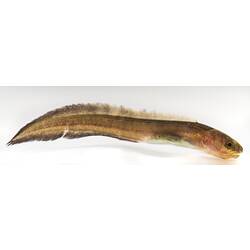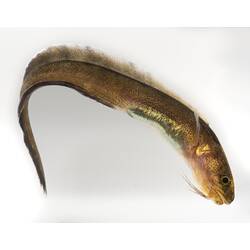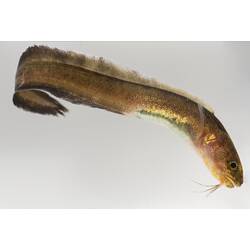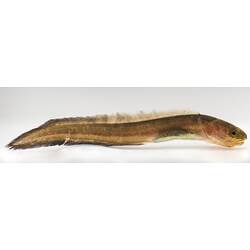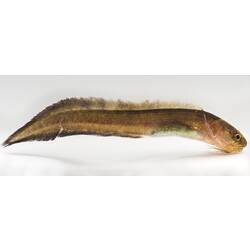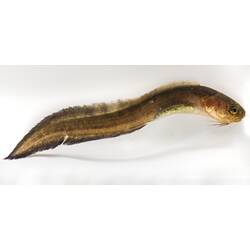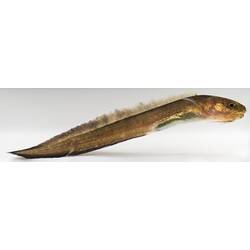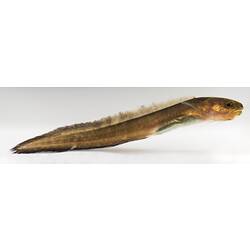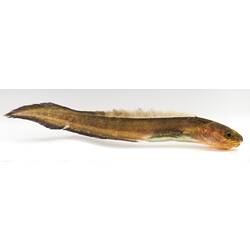General Description
Body long, slender with long-based dorsal and anal fins continuous with the pointed tail. Mouth large, terminal, upper jaw extending beyond eye; a single feeler-like pelvic fin arising below middle of eye on each side; pectoral fins small; scales minute, smooth, embedded in skin. Body and head a motttled greyish, with prominent blackish spots or blotches; pectoral fins broadly banded or spotted; pelvic fins pale, other fins blackish with a narrow white margin; large individuals almost black. To 1.2 m.
Biology
Rock lings are considered good eating, although they are overfished in some areas along the coast.
Distribution
Southern Australia.
Habitat
Adults found in caves and crevices during the day, juveniles often in seagrass beds, in depths of 1-60 m.
More Information
-
Animal Type
-
Animal SubType
-
Brief Id
Long, slender fish with a pointed tail and a continuous fin along the back and tail.
-
Maximum Size
1.2 m
-
Habitats
-
Endemicity
-
Commercial
Yes
-
Conservation Statuses
DSE Advisory List: Not listed, EPBC Act 1999: Not listed, IUCN Red List: Not listed
-
Depths
Shallow (1-30 m), Deep ( > 30 m)
-
Water Column Locations
On or near seafloor, Midwater
-
Taxon Name
-
Scientific Author
Klunzinger, 1872
-
Common Name
Rock Ling
-
Kingdom
-
Phylum
-
Subphylum
-
Superclass
-
Class
-
Order
-
Family
-
Genus
-
Species Name
tigerinus


